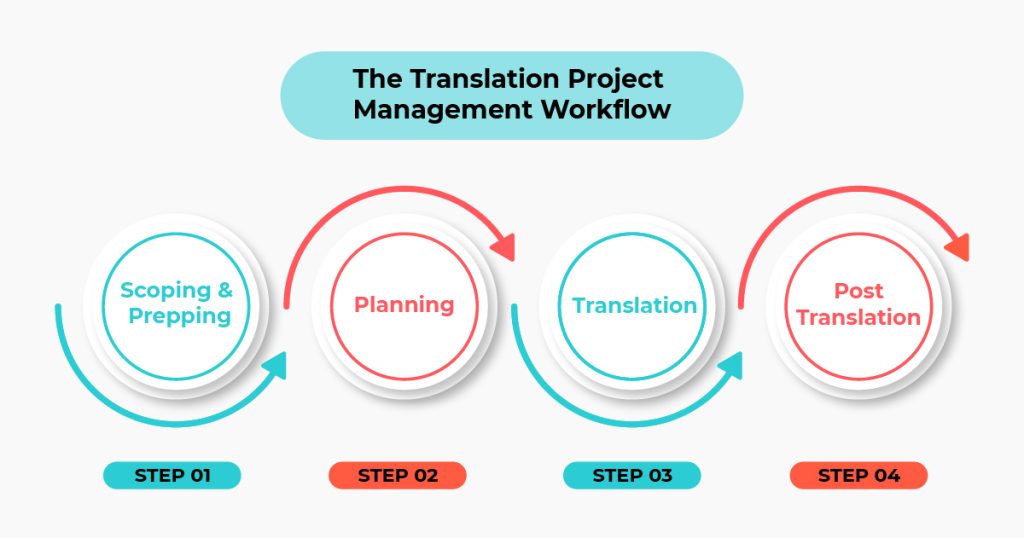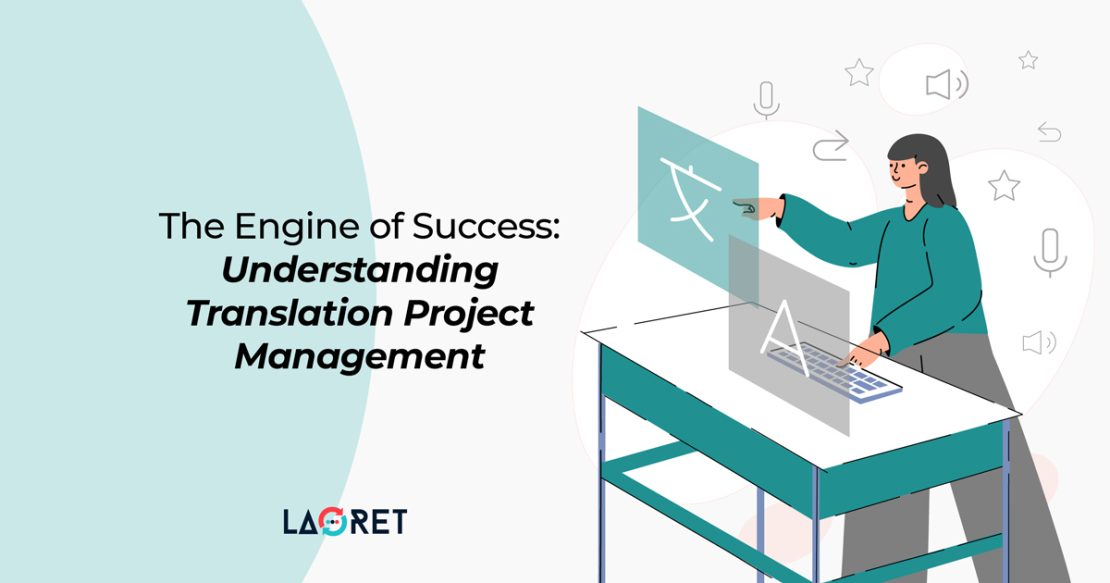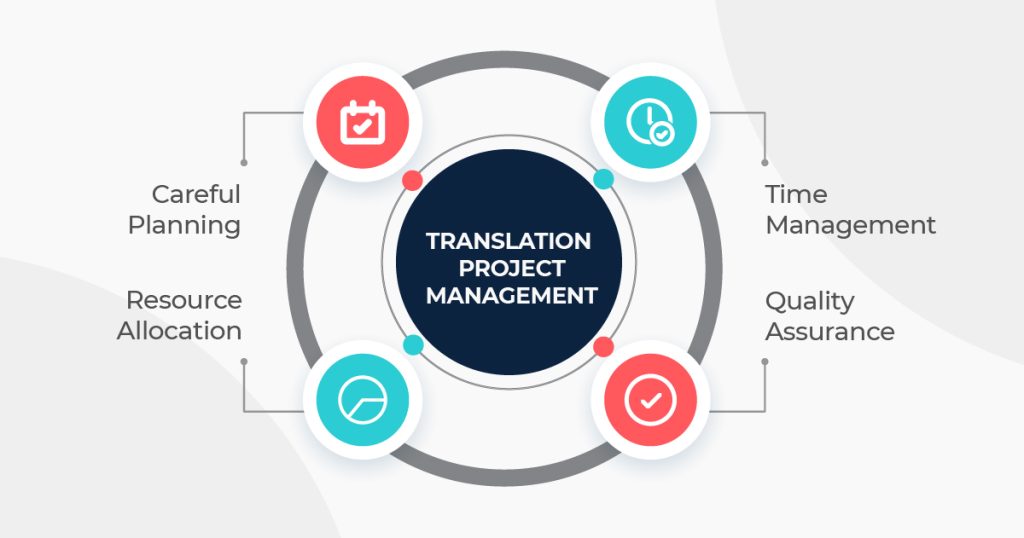The Engine of Success: Understanding Translation Project Management
Joy Gumz says, “Operations keep the lights on, strategy provides a light at the end of the tunnel, but project management is the train engine that moves the organization forward.” This is especially true in the translation industry.
You might be thinking that a good translator is all you need to deliver a flawless piece of translated content. But in reality, it takes much more than language expertise. It takes time management, budgeting, clear communication, crisis control, and skillful handling of requirements and feedback.
This is where translation project management comes in. It’s the engine ensuring that requirements and budgets are met, communications flow smoothly, timelines are adhered to, and teams are perfectly in sync. A good project manager doesn’t just deliver a high-quality product on time and within budget; they also empower translators to perform at their very best.
In this blog post, we’ll delve into the world of translation project management. We’ll explore its definition, uncover its benefits for businesses like yours, and introduce essential tools that streamline the entire translation workflow.
What Is Translation Project Management?
So, you’re juggling multiple translators, facing tight deadlines, and striving to meet specific client or project requirements – all at once. Sounds tricky, right? Not with professional translation project management.
So, translation project management is the process of planning, organizing, and coordinating all aspects of a translation project to ensure its successful completion. This involves:
- Careful Planning: Defining project scope, setting realistic deadlines, and establishing clear communication channels.
- Resource Allocation: Selecting the right translators with the specific expertise your project demands.
- Time Management: Keeping everyone on schedule and tracking progress to prevent delays.
- Quality Assurance: Implementing rigorous quality control measures to guarantee accurate and culturally appropriate translations.
But here’s the thing – every ship needs a captain to navigate the vast ocean of translation challenges. In the world of translation, that’s the translation project manager. The translation project manager oversees the entire project lifecycle from initial project planning to final delivery and ensures effective communication between all parties involved.
As management expert Peter F. Drucker said, “Management is doing things right; leadership is doing the right things.” A skilled translation project manager embodies both. They not only ensure each task is executed efficiently but also guide the project towards overall success, always keeping the client’s goals and expectations top of mind.
They are the central point of contact, facilitating clear communication between translators, clients, and any other stakeholders. Their expertise and guidance are essential for navigating the complexities of the translation process and delivering a final product that truly hits the mark.
Well, the role of project management and managers is indispensable for your business growth and success. So, let’s discuss for now the long-term benefits of effective translation project management.
Benefits of Effective Translation Project Management
Cost and Time Efficiency
You might initially think that project management adds extra costs. However, it is an investment that pays off significantly.
Effective translation project management helps organizations avoid rework and minimize the time spent on revisions, resulting in substantial cost savings and speeding up delivery.
Experienced project managers are adept at identifying potential issues early in the project lifecycle. By addressing these risks proactively, they can avoid costly last-minute changes and crisis management, ensuring the project stays within budget and timeline.
Enhanced Quality and Consistency
Effective project management is the base of high-quality translations. It’s not just about getting the words translated; it’s about ensuring those words resonate with the target audience while maintaining the integrity and consistency of your brand.
How is this achieved? It is through the project managers who
- Implement multi-layered quality checks throughout the translation process. This includes thorough proofreading, meticulous editing, and adherence to established style guides and glossaries.
- Standardize workflows and processes to ensure that every translation project adheres to the same high standards. A well-managed translation project ensures consistency in terminology, style, and overall messaging, which is crucial for maintaining brand identity and communication clarity.
- Carefully select translators with specific language expertise and industry knowledge, guaranteeing that your content is handled by the most qualified professionals.
This meticulous approach to quality assurance ensures that your translations are not only accurate but also culturally appropriate, engaging, and aligned with your brand identity.
Accelerate Global Market Reach
Entering new markets often hinges on effective translation, but it’s not just about translating words — it’s about conveying a message that truly resonates with your target audience. And a well-structured translation project management goes beyond simple linguistic conversion.
It involves conducting thorough market research into the process and analyzing the cultural nuance, linguistic preferences, and specific needs of your target market. After research, you can implement effective translation and localization ensuring your message is adapted not just linguistically but also culturally, resonating authentically with your new audience
And for that, you can deliver secure and timely projects allowing for a smooth and efficient entry into new markets. So, translation project management empowers you to connect with a wider global audience, accelerating your international growth and solidifying your presence in new markets.
Navigating the vast ocean of translation services, even with the most skilled management and translation team members, presents inherent complexities. So why not equip yourself with the tools designed to streamline the journey and elevate your project’s success?
Let’s explore the essential tools for translation project management that can transform your approach.
Essential Tools for Translation Project Management
In today’s fast-moving global world, managing translation projects well takes more than just basic office tools. To really make things run smoothly, work better together, and get great results, project managers use a set of special tools designed just for translations.
Let’s explore some of the essentials translation software tools:
1. Translation Management Systems (TMS): The Central Hub
A TMS is the nerve center of translation project management. These comprehensive platforms offer a centralized hub for managing all aspects of your projects, including:
- Project Creation and Management: Easily create, assign, track, and monitor the progress of multiple translation projects simultaneously.
- Linguist Management: Maintain a database of translators, track their availability, and assign tasks based on their expertise and language pairs.
- Workflow Automation: Automate repetitive tasks, such as file preparation, quote generation, and invoice processing, freeing up time for more strategic activities.
2. Computer-Assisted Translation (CAT) Tools: Boosting Efficiency and Consistency
CAT tools are indispensable for translators, offering features that enhance productivity and maintain consistency:
- Translation Memory (TM): Stores previously translated segments, allowing for reuse and ensuring consistency across projects.
- Terminology Management: Creates and manages glossaries of industry-specific and client-preferred terms, ensuring accurate and consistent use of language.
- Quality Assurance Features: Provide tools for automated quality checks, identifying potential errors in grammar, spelling, terminology, and style.
The Translation Project Management Workflow: A Step-by-Step Breakdown

1. Scoping & Prepping:
This initial phase sets the foundation for the entire project. It involves:
- Understanding the Client’s Needs: Defining the target audience, the purpose of the translation, the desired tone and style, and any specific terminology requirements.
- Analyzing the Content: Determining the word count, subject matter complexity, and any technical challenges the text might present.
- Resource Gathering: Identifying the necessary language pairs, translation tools, and reference materials.
2. Planning:
With a clear understanding of the project scope, the planning phase kicks in:
- Budgeting & Timeline: Creating a realistic budget and timeline, considering the project’s scope and complexity.
- Team Selection: Assigning the most qualified translators and reviewers based on their expertise and language proficiency.
- Workflow Design: Establishing a clear workflow, outlining each step of the translation and quality assurance process.
3. Translation:
This is where the magic happens:
- Content Translation: Linguists carefully translate the source text, ensuring accuracy, fluency, and cultural appropriateness.
- Ongoing Communication: Translators communicate with the project manager and each other to clarify any doubts or inconsistencies.
- Progress Tracking: The project manager monitors progress, addressing any roadblocks or unexpected challenges.
4. Post Translation:
The journey doesn’t end with the initial translation:
- Quality Assurance: A dedicated team of translators, editors, and reviewers examine carefully the translated content for accuracy, consistency, and adherence to style guides.
- Client Feedback & Revisions: The client reviews the translated content and provides feedback, prompting any necessary revisions.
- Final Delivery: The final, polished translation is delivered to the client in the desired format.
By following this structured workflow, translation project managers ensure smooth sailing from the initial briefing to the final delivery of a high-quality, culturally relevant translation.
Managing translation projects is a complex task that involves detailed planning, a skilled team, and a dedication to quality. Every stage, from starting a project to completing it successfully, is crucial. Achieving success in translation depends on continuous improvement and promoting strong communication within the team.
Laoret, Your Trusted Partner For Well Managed Translation & Localization Services
Translation Project Management is the robust framework that holds together any translation project. As a translator, the project manager will give you a solid structure to rely on and provide you with all the translation and localization resources you need to bring the project to a satisfactory end for everyone involved.
At Laoret, we hire native linguists with subject matter expertise to join our international teams and leverage cutting-edge technological and projected management tools to streamline every project.
Curious to find out more? Contact us and find out what we can do for you!







